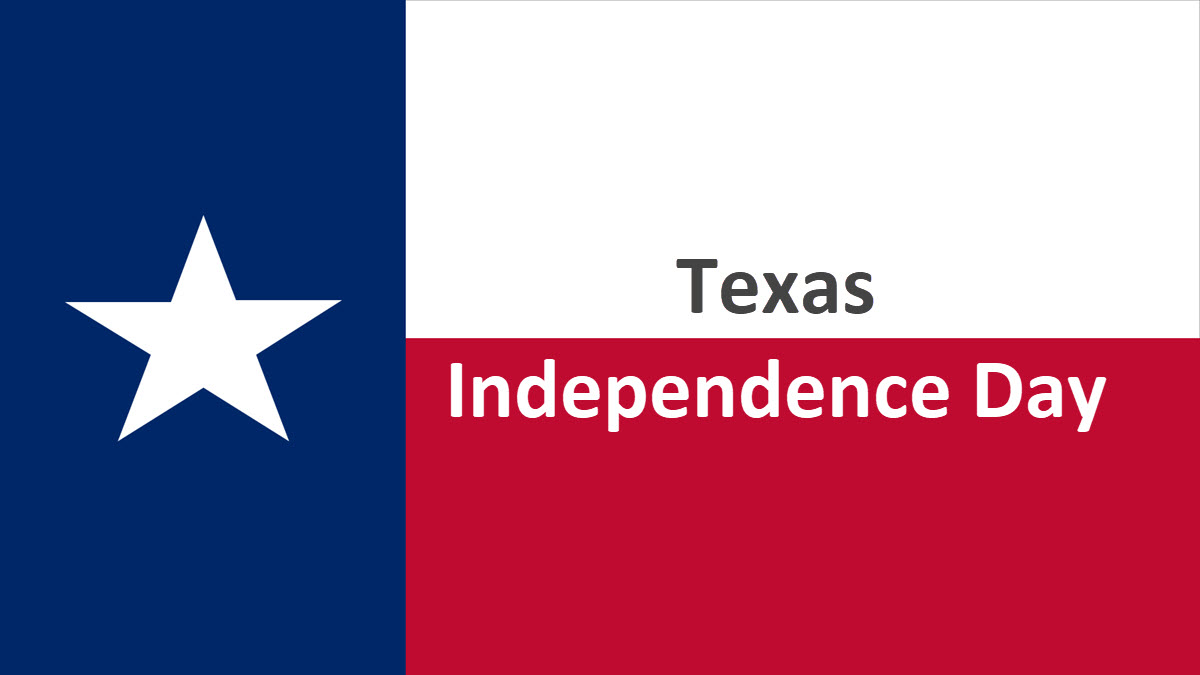
Texas Independence Day

Texas Independence Day commemorates the adoption of the Texas Declaration of Independence in 1836. This historic event marked Texas's decision to separate from Mexico and declare itself an independent republic. The day is a celebration of Texan heritage, resilience, and the unique identity of the Lone Star State.
Table of Contents
- When is Veterans Day?
- The History of Veterans Day?
- What Do People Do on This Day?
- The History of Texas?
When is Texas Independence Day?
Texas Independence Day is celebrated annually on March 2. This date marks the adoption of the Texas Declaration of Independence in 1836.
The following is the list of Texas Independence Day from 2020 to 2049.
The History of Texas Independence Day?
In the early 1820s, Mexico encouraged settlers from the United States to colonize Texas (then part of Mexico) under the condition that they adopt Mexican laws and culture. Over time, cultural and political tensions arose between the settlers and the Mexican government, especially regarding immigration, property rights, and slavery.
In the 1830s, Mexican President Antonio López de Santa Anna dissolved the federal system and centralized power, angering many Texans. Santa Anna's policies, including stricter enforcement of laws and bans on immigration from the U.S., fueled dissatisfaction.
The Texas Revolution began in October 1835 with the Battle of Gonzales, where Texan settlers resisted Mexican forces attempting to seize a cannon. On March 2, 1836, 59 delegates met at Washington-on-the-Brazos and signed the Texas Declaration of Independence. The document, modeled after the U.S. Declaration of Independence, outlined grievances against Mexico.
After several battles, Texas became an independent nation, the Republic of Texas, with Sam Houston serving as its first president.
Texas Independence Day was officially recognized as a state holiday in 1874, though celebrations began much earlier. Texas remained an independent republic until 1845, when it was annexed into the United States as the 28th state. Its independence and the events leading to statehood continue to be celebrated and remembered as a defining chapter in American and Texan history.
What Do People Do on This Day?
Texas Independence Day is filled with commemorative activities, historical reenactments, community events, and displays of Texan pride.
Local governments, schools, and organizations hold events to honor the memory of the Texan settlers and Tejanos who fought for independence. Floats, marching bands, and participants in period costumes celebrate Texan culture and history.
Cities and towns across Texas host festivals featuring live music, Texan food, and activities and games. Historical museums across Texas offer special exhibits showcasing artifacts, documents, and stories from the era of independence.
Families and friends gather to enjoy traditional Texan foods like barbecue, chili, and Tex-Mex dishes. People may take advantage of the day to visit state parks, hike, and explore the Lone Star State's natural beauty.
Celebrations highlight the sacrifices and determination of the Texan settlers and leaders who fought for independence. Activities ensure that future generations understand the significance of Texas's independence and its unique place in American history.
The History of Texas?
Texas has a rich and diverse history shaped by Indigenous peoples, Spanish colonization, Mexican governance, and its time as an independent republic before joining the United States.
Long before European contact, Texas was home to numerous Native American tribes. These tribes lived in diverse environments, from the plains and deserts to the forests, adapting to their surroundings with agriculture, hunting, and trading.
In 1519, Spanish explorer Álvar Núñez Cabeza de Vaca became one of the first Europeans to explore Texas. Texas became part of the Spanish Empire and was incorporated into New Spain. Spain established missions and forts to convert Indigenous peoples and protect the territory. By the late 18th century, Spanish influence waned as the region faced challenges from Native resistance and foreign threats.
After Mexico gained independence from Spain in 1821, Texas became part of Mexican territory. Mexico encouraged U.S. settlers to move to Texas and develop the land. Tensions grew between Texan settlers and the Mexican government over issues like immigration restrictions, taxation, and slavery.
The Texas Revolution began in 1835 with the Battle of Gonzales, where Texians resisted Mexican attempts to retrieve a cannon. On March 2, 1836, the Texas Declaration of Independence was signed at Washington-on-the-Brazos, establishing the Republic of Texas.
Texas existed as an independent republic for nearly a decade from 1836 to 1845. During this time, Texas faced challenges such as financial instability, border disputes, and conflicts with Native American tribes.
On December 29, 1845, Texas was annexed by the United States as the 28th state, however, because Mexico had never officially recognized Texas's independence, this led to the Mexican-American War, which lasted two years from 1846 to 1848.
Texas joined the Confederate States of America during the Civil War. After the Confederacy's defeat, Texas underwent reconstruction, which brought significant political and social changes, including the abolition of slavery and the reintegration into the Union.
Texas is now the second-largest U.S. state in both area and population, and its major cities, such as Houston, Dallas, Austin, and San Antonio, are centers of innovation, culture, and business.